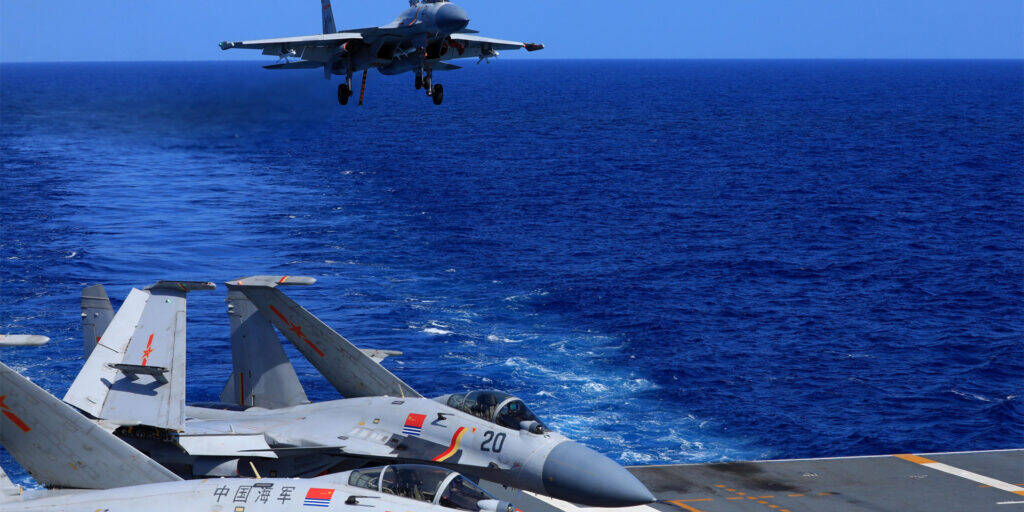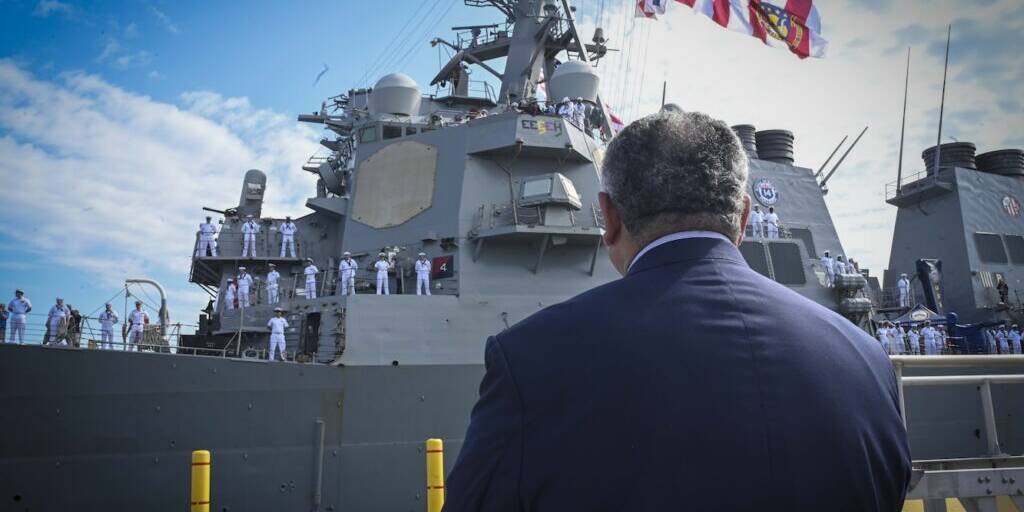John Bradford & Scott Edwards, for Pacific Forum
This week the coast guards of Japan, the Philippines, and the United States conduct their first-ever exercise, two weeks after the United States and Japan delivered joint training in the Philippines. In another precedent-setting, first-ever event, on May 4 senior leaders from nine Indo-Pacific coast guards gathered at the International Maritime Security Conference (IMSC) in Singapore to discuss their priorities for future collaboration. These are just two examples representing a rise in coast guard cooperation aimed at advancing maritime governance and preserving maritime order in the face of increasingly complex maritime challenges.
Coming together to talk
The IMSC consistently draws chiefs of navy from around the globe, but this was the first time the event included such a large representation from coast guards. The IMSC even included a special panel headlined by Vice-Admiral Dr. Aan Kunia, head of Bakamla (the de facto Indonesian coast guard) and Vice-Admiral Roland N. Lizor Ounzalan, the Philippine Coast Guard’s deputy commander for operations.
This is just the latest of a series of gatherings marking the rise of coast guard dialogue in the region. Since 2004, coast guard leaders have assembled for the Head of Asian Coast Guard meetings, and a broader Coast Guard Global Summit was established in 2017. In 2022, Indonesia organized the ASEAN Coast Guard Forum, a body it hopes to institutionalize this year. These assemblies allow senior leaders to share perspectives and cohere understandings of the complex and inter-related maritime threats the region faces. They also allow leaders to find opportunities for tangible cooperation and combined operations.
Budding relationships
In the Indo-Pacific, the most advanced maritime law enforcement cooperative relationship is between the US Coast Guard (USCG) and Japanese Coast Guard (JCG). In 2022 they updated their partnership to the “Solid Alliance for Peace and Prosperity with Humanity and Integrity on the Rule-of-Law Based Engagement” (SAPPHIRE). This expanded partnership focuses on standard operating procedures for combined operations, training, capacity-building, and information sharing. The USCG and JCG now conduct advanced exercises together in Japanese waters, where they have practiced interdicting simulated foreign vessels operating illegally inside Japanese waters. The JCG has also successfully engaged in joint counter-narcotics operations around Guam and assisted to rescue a lost freediver offshore Hawaii. They have trained with the Philippine Coast Guard, setting the stage for the upcoming trilateral exercise.
Other Indo-Pacific coast guards and maritime law enforcement agencies are taking similar steps to improve their cooperation. Japan has led the way by advancing relations with a range of partners, but is far from alone. For example, Japan signed a memorandum of understanding with the Philippines in 2016 that enables joint anti-piracy activities around Tawi-Tawi and has a long-standing MoU with India that underpins the annual exercise Sahyog Kaijin. India, for its part, has other MoUs with the coast guards of Bangladesh, South Korea, and Vietnam, and it hosts the international coast guard exercise Dosti with Sri Lanka and the Maldives. The United States sponsors the Southeast Asian Maritime Law Enforcement Initiative, an annual leaders’ forum designed to enhance regional stability by promoting maritime safety, security cooperation, coordination, and information-sharing. Even agencies that fulfill similar functions but with a more near-shore focus, such as the Australian Border Force, increasingly work with coast guards further afield.
Cooperation is also on the rise among Southeast Asian coast guards, teaming up more-and-more to improve their efficiency and efficacy. The MoU between the Vietnamese Coast Guard and Bakamla has evolved into a letter of intent to ramp up operations cooperation between the two forces while the VCG also maintains an MoU with Cambodia’s National Committee for Maritime Security. A proposed Tripartite Coast Guard Agreement would also see coordinated patrols in the Sulu and Celebes seas between the PCG, Bakamla, and Malaysia’s Maritime Enforcement Agency.
There is also increasing cooperation between coast guards and navies. Perhaps, the best example of this is SEACAT. This multilateral naval exercise sponsored by the United States since 2002 has included coast guard elements since 2016. In 2022, seven coast guards participated, as well as several navies with constabulary roles. Similarly, several coast guards have sent international liaison officers to the navy-centric Information Fusion Center in Singapore, with the most recent addition being the officer from the Republic of Korea Coast Guard, who arrived in April.
Drivers & outcomes of cooperation
This expanding cooperation is driven by three overarching trends. First, perceived threats in the region have evolved to become more complex. Criminals use regional routes to drive the global circulation of illicit goods, including drugs, across borders while others seek to benefit from attacking this circulation directly through piracy and armed robbery at sea. Second, oceans and seas have taken on a particular importance to regional development, making their resilience and protection particularly important. The ASEAN Leaders’ Declaration on the Blue Economy, for example, explains that “the ocean and seas are key drivers of economic growth and innovation.” Third, but related, with their intent to strengthen their maritime governance—particularly in improving maritime safety, marine environmental protection and maritime law enforcement—regional countries place more attention on creating and expanding their coast guards to improve the constabulary effectiveness of the maritime forces.
Cooperation between coast guards and other agencies, along with other advancements in regional maritime security, have yielded results. For example, the Sulu Sea was a prime hunting ground for terrorists and other criminals, but there has not been a kidnapping there since 2020. Sea robbery remains a problem in the straits of Malacca and Singapore, but instead of hijackings the incidents now amount to petty thefts.
Coast guards and interstate entanglements
More needs to be done. While some interstate border disputes have stabilized, tensions are escalating around the South China and East China seas. As tools of statecraft deployed to manage geopolitical stresses, coast guards were originally perceived as less provocative than navies, but they are increasingly the leading edge of worrisome international competitions. As geopolitical tensions deepen and interstate disputes sharpen at sea, bringing a broader grouping of coast guard leaders together is—and will be increasingly—significant.
Some issues considered the domain of law enforcement are now intertwined with missions where national governments seek to assert their sovereignty in maritime areas at the expense of other claimants.
In 2013, several Chinese maritime agencies were combined into the China Coast Guard (CCG). This force—the world’s largest coast guard by fleet size and the one with the heaviest weapons—was placed under the command of the Central Military Commission in 2021. Since then, China has chosen to deploy this coast guard alongside a state-backed maritime militia into disputed waters in the East and South China Seas on missions designed more to assert control and demonstrate sovereignty than to provide for good order at sea.
China’s neighbors have felt the need to respond in-kind, and there has been a rapid expansion of their fleet sizes and operational tempos, particularly in Japan and the Philippines. The number of incidents is on the rise. For example, in February the PCG accused a CCG vessel of using a military-grade laser to blind the crew of the PCG ship, BRP Malapascua. The same PCG vessel was also in a near-collision with a much larger CCG ship during unsafe maneuvers that were captured on video in April. There is an increasing risk that lives may be lost, or that interactions escalate to crisis. Dialogue and diplomacy therefore become necessary to lower tensions and develop the necessary crisis management mechanisms.
Unfortunately, the CCG is noticeably absent from most of these cooperation-focused conversations. Its leaders have attended some of the senior dialogues in the past but have been missing in recent years. Their seats were vacant at the 2022 meetings of the Coast Guard Global Summit and the HACGM. They were similarly absent from last week’s IMSC. A lack of cooperation between the CCG and Southeast Asian coast guards demonstrates a troubling shortfall. That the CCG’s only significant new cooperative arrangement in recent years is one it signed with Russia is unlikely to reassure many in the Indo-Pacific.
Dialogue among coast guards and the cooperation it fosters are taking on growing importance as their roles expand, but gaps exist. Countries should continue to host opportunities to build those relationships, and more coast guards should turn up ready to find the solutions needed to make the seas safer for all stakeholders.
The original article can be found here at the Pacific Forum.
Author:
John Bradford is Senior Fellow in the Maritime Security Programme at the S Rajaratnam School of International Studies (RSIS)
Scott Edwards is Free & Open Indo-Pacific Fellow at the Yokosuka Council on Asia-Pacific Studies (YCAPS).
Feature Image: HAL Chetak of the Indian Coast Guard / Ministry of Defence of India, via Wikimedia Commons


